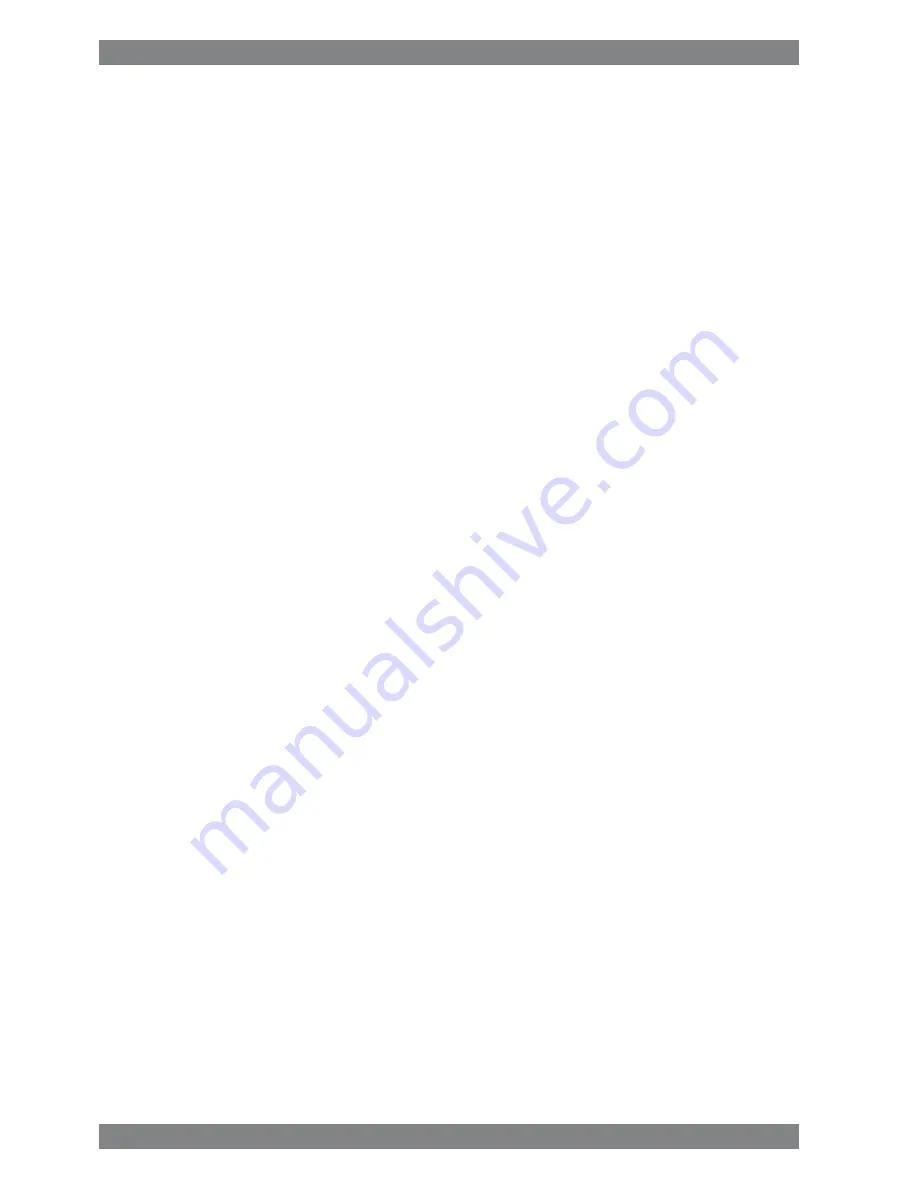
To ensure sufficient time for settling (water and sediment separation), the capacity of each
tank should be sufficient for min. 24 hours operation at maximum fuel consumption.
The tanks should be provided with internal baffles to achieve efficient settling and have a
sloped bottom for proper draining.
The temperature in HFO settling tanks should be maintained between 50°C and 70°C, which
requires heating coils and insulation of the tank. Usuallly MDF settling tanks do not need
heating or insulation, but the tank temperature should be in the range 20...40°C.
Day tank, HFO (1T03) and MDF (1T06)
Two day tanks for HFO are to be provided, each with a capacity sufficient for at least 8 hours
operation at maximum fuel consumption.
A separate tank is to be provided for MDF. The capacity of the MDF tank should ensure fuel
supply for 8 hours.
Settling tanks may not be used instead of day tanks.
The day tank must be designed so that accumulation of sludge near the suction pipe is
prevented and the bottom of the tank should be sloped to ensure efficient draining.
HFO day tanks shall be provided with heating coils and insulation. It is recommended that the
viscosity is kept below 140 cSt in the day tanks. Due to risk of wax formation, fuels with a
viscosity lower than 50 cSt at 50°C must be kept at a temperature higher than the viscosity
would require. Continuous separation is nowadays common practice, which means that the
HFO day tank temperature normally remains above 90°C.
The temperature in the MDF day tank should be in the range 20...40°C.
The level of the tank must ensure a positive static pressure on the suction side of the fuel feed
pumps. If black-out starting with MDF from a gravity tank is foreseen, then the tank must be
located at least 15 m above the engine crankshaft.
Leak fuel tank, clean fuel (1T04)
Clean leak fuel is drained by gravity from the engine. The fuel should be collected in a separate
clean leak fuel tank, from where it can be pumped to the day tank and reused without
separation. The pipes from the engine to the clean leak fuel tank should be arranged continuosly
sloping. The tank and the pipes must be heated and insulated, unless the installation is designed
for operation on MDF only.
In HFO installations the change over valve for leak fuel (1V13) is needed to avoid mixing of
the MDF and HFO clean leak fuel. When operating the engines in gas mode and MDF is
circulating in the system, the clean MDF leak fuel shall be directed to the MDF clean leak fuel
tank. Thereby the MDF can be pumped back to the MDF day tank (1T06).
When switching over from HFO to MDF the valve 1V13 shall direct the fuel to the HFO leak
fuel tank long time enough to ensure that no HFO is entering the MDF clean leak fuel tank.
Refer to section "Fuel feed system - HFO installations" for an example of the external HFO
fuel oil system.
The leak fuel piping should be fully closed to prevent dirt from entering the system.
Leak fuel tank, dirty fuel (1T07)
In normal operation no fuel should leak out from the components of the fuel system. In
connection with maintenance, or due to unforeseen leaks, fuel or water may spill in the hot
box of the engine. The spilled liquids are collected and drained by gravity from the engine
through the dirty fuel connection.
Dirty leak fuel shall be led to a sludge tank. The tank and the pipes must be heated and
insulated, unless the installation is designed for operation exclusively on MDF.
6-24
Wärtsilä 50DF Product Guide - a16 - 9 September 2016
Wärtsilä 50DF Product Guide
6. Fuel System
Summary of Contents for WARTSILA 50DF
Page 1: ...WÄRTSILÄ 50DF PRODUCT GUIDE ...
Page 14: ...This page intentionally left blank ...
Page 40: ...This page intentionally left blank ...
Page 58: ...This page intentionally left blank ...
Page 102: ...This page intentionally left blank ...
Page 120: ...This page intentionally left blank ...
Page 154: ...This page intentionally left blank ...
Page 164: ...This page intentionally left blank ...
Page 176: ...This page intentionally left blank ...
Page 214: ...This page intentionally left blank ...
Page 232: ...This page intentionally left blank ...
Page 234: ...This page intentionally left blank ...
Page 237: ......
Page 238: ......
Page 239: ......
















































